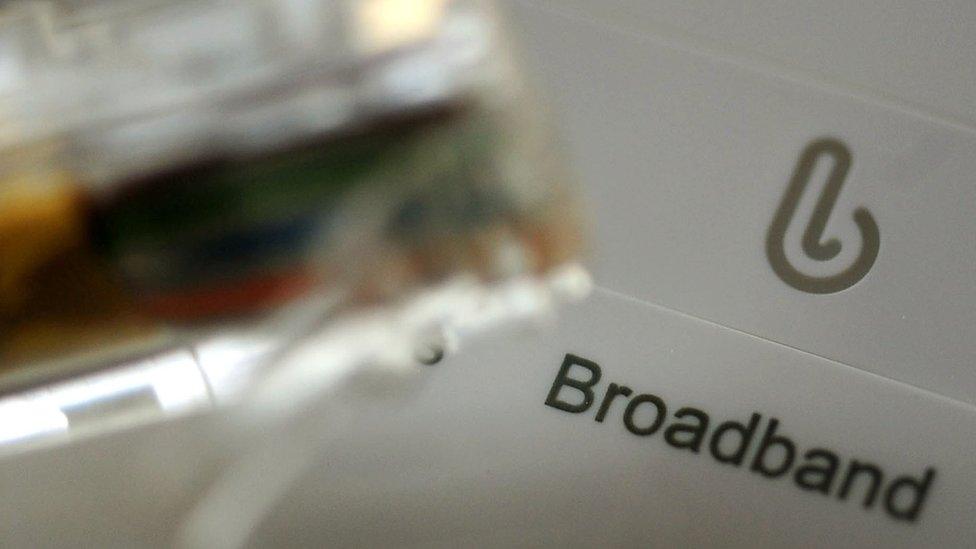UK hits broadband target… maybe
- Published
- comments

Good news on broadband - the UK has hit the target of making a superfast connection available to 90% of homes, as promised back in 2010. But the bad news is that the world has moved on since then, and this achievement won't have anyone cracking open the champagne.
The target was set in 2010 in the early months of the coalition government and came with a pledge that the UK would have "the best superfast broadband in Europe" by 2015. Both aims were later modified as the process of handing over subsidies to BT for rolling out fibre connections in rural areas took longer than expected - 90% by 2015 turned into 95% by 2017 and "best in Europe" turned out to involve a scorecard comparing us on various measures with the larger European countries.
But now Thinkbroadband, external - which uses a range of data including speed tests to work out coverage - says the 90% target has been hit just a little later than originally planned and we are well on the way to the 95% coverage promised for next year.
There are however two problems. First, the 10% of householders who are still waiting for a decent connection are getting ever more frustrated - just ask any MP with a rural constituency what's in his postbag. Then there is the issue of what constitutes superfast broadband.
Thinkbroadband and Ofcom both go with something above 24Mbps which looked quite fast back in 2010. Those kinds of speeds can be achieved pretty easily via the kind of fibre to the cabinet rollout which has been BT's preferred method. And when you look at how the UK compares with other big European countries, then this level of "superfast" broadband availability does mean we top the league, according to Ofcom.
But broadband campaigners - who are prone to call the current strategy "superfarce" - say this strategy means the UK is in danger of being saddled with a network that just isn't fit for the high-speed future. They advocate the more expensive option of much faster fibre to the home (FTTH) connections and point out that other European countries are far ahead in this.
Indeed, the Thinkbroadband figures show that FTTH is still only available to 1.56% of British homes, whereas on the continent it's becoming the standard option in many countries. Mind you, for the downside to this different strategy just look at the figures for Hull. It's got one of the lowest levels of superfast broadband availability, just 37.6%. But it also scores highest for fibre to the home - again the rate is 37.6%.

The people of Hull may have better broadband coverage than the rest of the UK - but not as soon
That is because Hull's independent telecoms supplier KCOM - formerly Kingston Communications - has opted for what you might call a "continental" approach, building a network which puts a fast-fibre connection in every home. That is taking longer to roll out than BT's fibre to the cabinet, leaving many residents impatient, though in the end they will have something much faster than is available in many other UK cities.
The government may look at today's figures and think that, for a relatively modest outlay from taxpayers, the UK is on track to deliver pretty good broadband to pretty well everyone. But for the fast fibre campaigners "pretty good" is not good enough and they will continue to demand more.